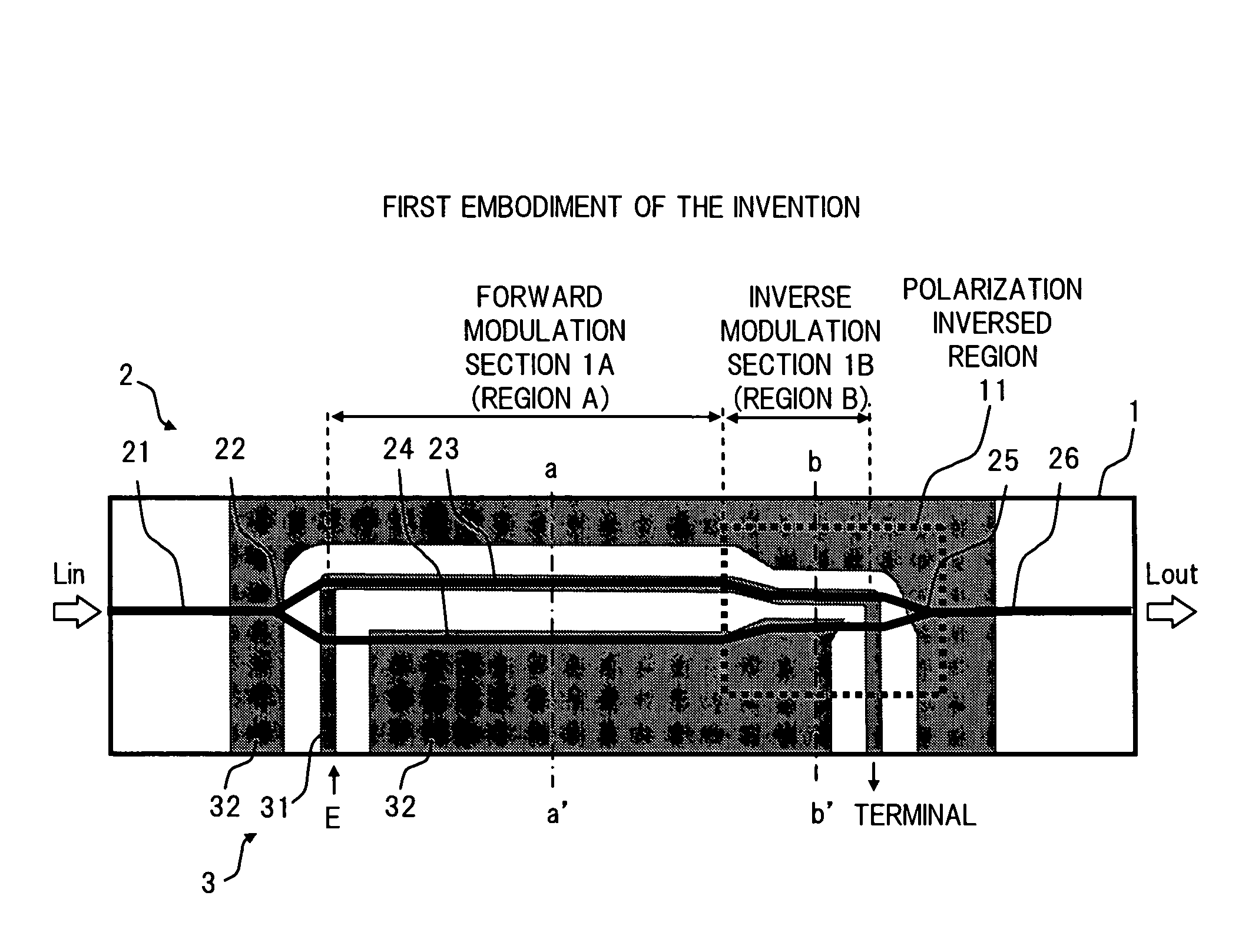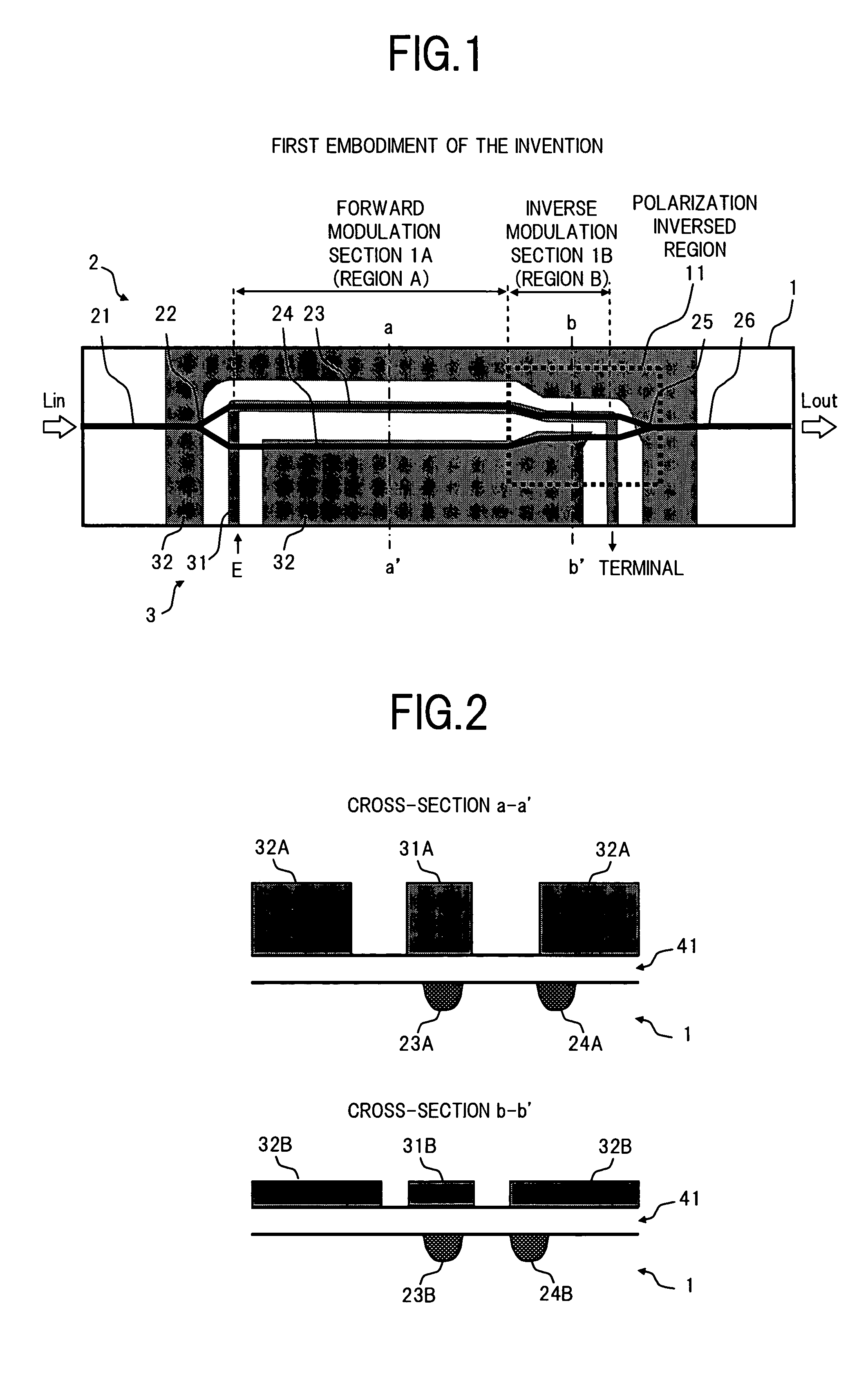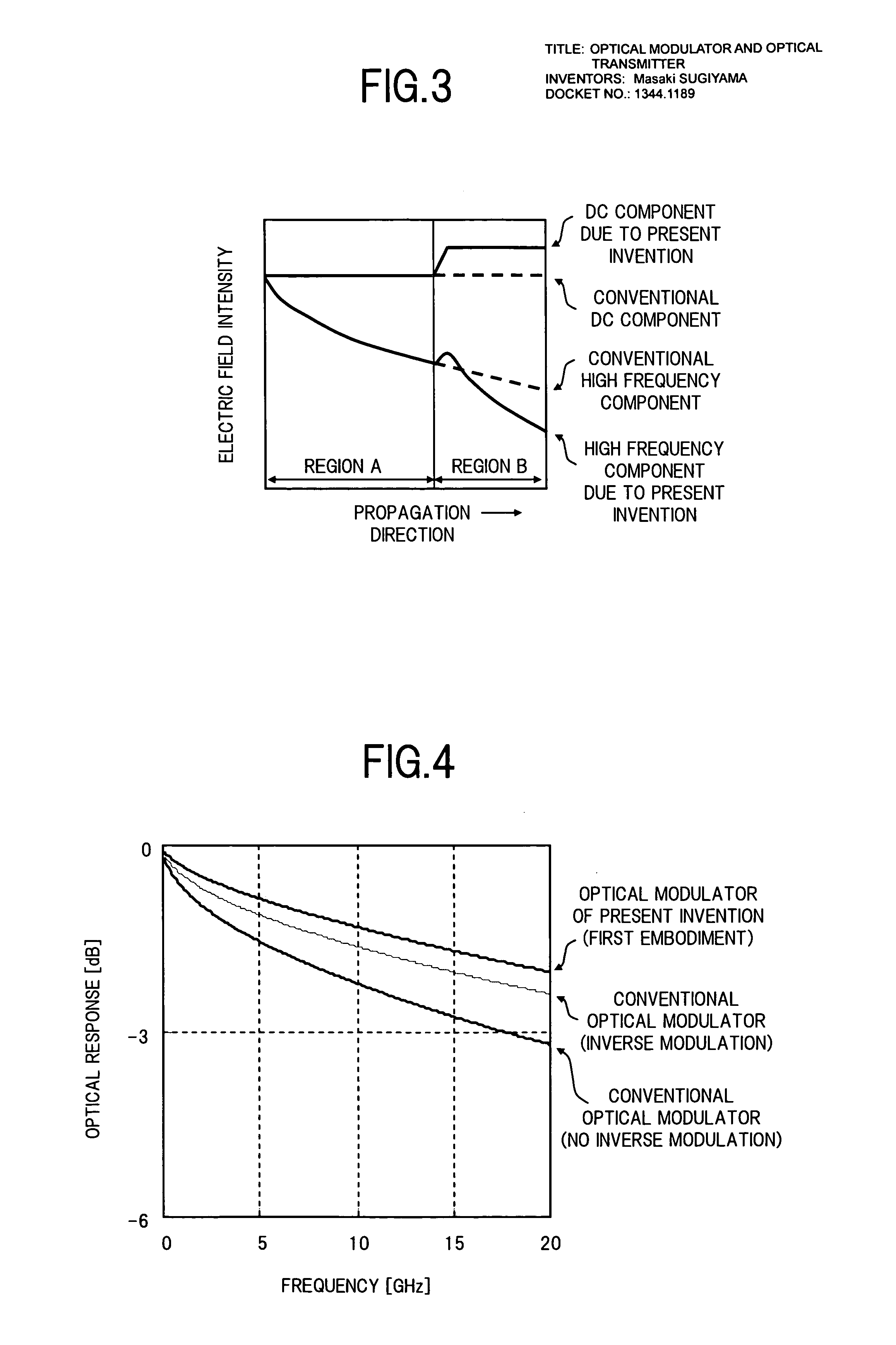Optical modulator and optical transmitter
a technology of optical modulator and optical transmitter, which is applied in the direction of instruments, non-linear optics, optics, etc., can solve the problems of limited bandwidth improvement, certain amount of inverse modulation, and difficulty in high-speed modulation, so as to improve the modulation bandwidth and speed. the effect of speeding up the rate and widening the modulation bandwidth
- Summary
- Abstract
- Description
- Claims
- Application Information
AI Technical Summary
Benefits of technology
Problems solved by technology
Method used
Image
Examples
first embodiment
[0049]FIG. 1 is a plan view showing a configuration of an optical modulator according to the present invention. Moreover, FIG. 2 is an enlarged view of section a-a′ and section b-b′ in the optical modulator of FIG. 1.
[0050]In FIG. 1 and FIG. 2, the optical modulator of the first embodiment comprises for example a substrate 1 having an electro-optic effect, an optical waveguide 2 of a Mach-Zehnder type formed on the substrate 1, and an electrode 3 formed on the surface of the substrate 1.
[0051]The substrate 1 uses a crystal substrate of for example Z-cut lithium niobate (LiNbO3) or Lithium Tantalate (LiTaO2), and in a region (hereunder interaction section) where light propagated through the optical waveguide 2 and an electric signal E propagated through the electrode 3 interact, a first region A on the input side which spans from the light input end over a predetermined length in the longitudinal direction (the light propagation direction) is made a forward modulation section 1A, and...
second embodiment
[0069]Next is a description of the present invention.
[0070]FIG. 9 shows an enlarged cross-section of respective sections in an optical modulator according to the second embodiment of the present invention. The plan view showing the configuration of the overall optical modulator of the second embodiment is similar to the case of the first embodiment shown in FIG. 1. Therefore, illustration is omitted here.
[0071]The optical modulator of the second embodiment is one where, for a buffer layer 41 formed between the surface of the substrate 1 and the signal electrode and the ground electrode, so that the dielectric loss of a buffer layer 41B (refer to the bottom of FIG. 9) positioned on the inverse modulation section 1B is greater than the dielectric loss of a buffer layer 41A (refer to the top of FIG. 9) positioned on the forward modulation section 1A, the substance constituting the respective buffer layers 41A and 41B is made different. The configuration other than for the buffer layers...
third embodiment
[0079]Next is a description of the present invention.
[0080]FIG. 12 is a plan view showing a configuration of an optical modulator according to the third embodiment of the present invention. Moreover, FIG. 13 is an enlarged view of section a-a′ and section b-b′ in the optical modulator of FIG. 12.
[0081]In FIG. 12 and FIG. 13, the point where the configuration of the optical modulator the third embodiment is significantly different to the configuration of the first embodiment shown in FIG. 1 and FIG. 2 is that regarding the distance (electrode spacing) between the signal electrode 31 and the ground electrode 32, the electrode spacing in the inverse modulation section 1B is relatively greater than the electrode spacing in the forward modulation section 1A. Furthermore, since the impedance increases if the electrode spacing is relatively increased, then by making the sectional area of the signal electrode 31B and the ground electrode 32B in the inverse modulation section 1B (the bottom ...
PUM
| Property | Measurement | Unit |
|---|---|---|
| thickness | aaaaa | aaaaa |
| electric field | aaaaa | aaaaa |
| electrical loss | aaaaa | aaaaa |
Abstract
Description
Claims
Application Information
 Login to View More
Login to View More - R&D
- Intellectual Property
- Life Sciences
- Materials
- Tech Scout
- Unparalleled Data Quality
- Higher Quality Content
- 60% Fewer Hallucinations
Browse by: Latest US Patents, China's latest patents, Technical Efficacy Thesaurus, Application Domain, Technology Topic, Popular Technical Reports.
© 2025 PatSnap. All rights reserved.Legal|Privacy policy|Modern Slavery Act Transparency Statement|Sitemap|About US| Contact US: help@patsnap.com



